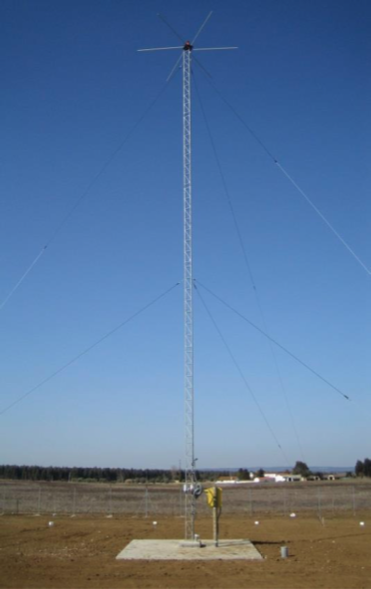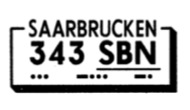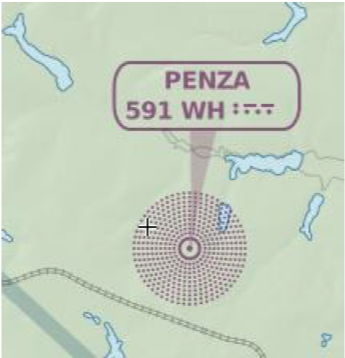¶ Introduction
The Automatic Direction Finding (ADF) equipment on-board of aircraft is used together with the Non Directional Beacon (NDB) transmitters installed on the ground. The on-board ADF is able to receive and decode NDB signals through an antenna system and a HF receiver to provide pilots with an indication of the relative position shown in the instrument.
A Non Directional Beacon, abbreviated 'NDB', is a ground installation consisting of a LF transmitter which transmits vertically polarized radio signals continuously and in all directions.
This radio navigation system is used mainly for Instrument Flight Rules flights (IFR). However, during VFR flights it can be quite useful in order to check aircraft's position.
This system is an old radio-aid system which is getting replaced gradually with more modern and accurate systems such as VOR or even GPS systems.
¶ Ground equipment: NDB
NDBs transmit their signals in the Low Frequency (LF) and Medium Frequency (MF) bands, operating from 190 to 1750 KHz. The radio signal propagates as a surface wave does, which provides quite a big amount of errors on the ADF which may sometimes cause the instrument indication not to be reliable. With the purpose of suppressing those errors as much as possible, they normally transmit between 250 and 450 KHz.
NDB errors may not be found on our perfect simulators. Each NDB has its own frequency and all of them are identified by names consisting of two or three letters or an alphanumeric combination. There are two types of NDBs, regarding the purpose for which they have been installed:
- Locator NDBs (L): These are low power NDBs located near an aerodrome. They are useful to simple design instrumental approach procedures for this airfield, or sometimes arrival or departure reference beacon. They can be also co-located with ILS system markers, which usually provide distance to touchdown when no DME is associated with the ILS. Locators range varies between 10 and 25 NM.
- En-route NDBs: These are higher powered NDBs which provide a greater range.
- Low power: used for IFR procedures not so near of an aerodrome, as a holding facility or en-route station, providing a range up
to 50 NM. - High power: used only for en-route navigation with ranges of more than 50 NM.
- Low power: used for IFR procedures not so near of an aerodrome, as a holding facility or en-route station, providing a range up
The NDB power class are :
| Class | Power | Estimated Distance (Radius) |
|---|---|---|
| Locator | <25W | 15 NM |
| MH | 25W - 50W | 25 NM |
| H | 50W - 2kW | 50 NM |
| HH | >2kW | 75 NM |
NDB can transmit other information for local aircraft like:
- ATIS: Automatic Terminal Information Service
- AWIS: Automatic Weather Information Service
- AWOS: Automated Weather Observation System
- ASOS: Automated Surface Observation System
- VOLMET: Meteorological Information Broadcast
- TWEB: Transcribed Weather Broadcast

Ground NDB installation
¶ NDB on charts
The symbol of NDB radio navigation beacons on charts can be like the figures below.

Associated with the NDB figure, you can have additional information written in a rectangle:
- Full clear name of the NDB
- Frequency in kHz
- 2 or 3 letter call sign of the NDB
- Morse code of the call sign


- None
- VID 150259 - Creation
- VID 450012 - Wiki Integration
- VID 496402 - Wiki.js integration